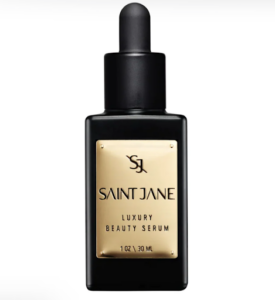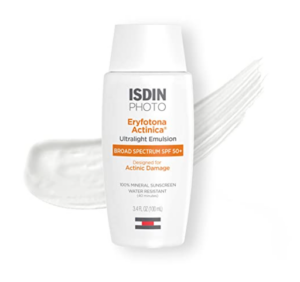Maybe you’ve heard of PRF (platelet-rich fibrin) or its predecessor, PRP (platelet-rich plasma), on your favorite injectors’ Instagram or from your aesthetic-obsessed bestie at happy hour. But what’s the real deal on this naturally-derived injectable substance, and is it the right choice for you? Keep reading to get the inside scoop on why PRF is one of our favorite treatments for skin rejuvenation!
What is PRF?
PRF, or platelet-rich fibrin, is a newer, improved version of PRP (platelet-rich plasma). This natural healing substance is found in our own bodies and has many regenerative properties to boost skin’s youthfulness and radiance.
Like with PRP, your provider will extract PRF from your body by drawing a small amount of your blood via a gentle needle prick. Then, the blood will be placed into a centrifuge machine for processing.
The difference is in how the blood is processed – PRF has a simpler processing method involving a lower speed of centrifugation and doesn’t require any additives to be effective, while PRP does. The result is a more efficient and potent product to deliver better rejuvenation results!
PRF releases many biologically active proteins that promote healing and rejuvenation, including:
- Several growth factors
- Healing matrix proteins
- Bone morphogenic protein
- Cytokines
- Other regenerative materials
Is PRF better than PRP?
In a sense, yes. PRF is more advanced than PRP and was actually developed as an alternative, more efficient option for skin rejuvenation. PRF can produce more growth factors than PRP, and the release of these growth factors continues to occur over a more extended period of time. This ultimately means that PRF is more efficient in terms of skin rejuvenation!
What areas can be treated with PRF?
PRF can be used in two ways: injected in the under eye or cheek area to provide targeted rejuvenation or alongside full-face microneedling for maximum regeneration. Your provider can help you determine the best treatment for your aesthetic goals and concerns.
PRF EzGel Under Eye Injections
What is PRF EzGel for under eyes?
PRF EzGel is the perfect treatment to inject in the undereye and/or cheek areas for soft and natural anti-aging results. PRF EzGel is a version of platelet-rich fibrin (PRF) that we obtain from your body via a blood draw to inject. Once injected in the undereye area, the PRF slowly releases growth factors that begin to reduce signs of aging, including fine lines, wrinkles, and loss of firmness and elasticity.
PRF EzGel is specifically designed for injection under the eyes, where it provides growth factors to the delicate area to help cellular regeneration. You’ll love how bright, awake, and renewed your under eye area looks post-treatment!
Book your PlasmaFiller Brightening Treat with CULT Aesthetics in Dallas, TX or Atlanta, GA!
PRF EzGel for Under Eyes Aftercare Products
After your PlasmaFiller Brightening Treatment, you’ll want to give this delicate area extra TLC with products like SkinMedica Instant Bright Eye Masks and Tensage Stem Cell Eye Cream.
SkinMedica Instant Bright Eye Masks

Instant Bright Eye Masks contain golden root and golden herb extract for antioxidant protection and rejuvenation, plus baker’s yeast extract to keep your under eye area nourished and hydrated. They’re the perfect post-procedure pick-me-up.
Shop Instant Bright Eye Masks at Squeeze Skin.
Tensage Stem Cell Eye Cream

Tensage Stem Cell Eye Cream is incredible for the undereye area post-treatment because it promotes rejuvenation and renewal. Unique CellPro™ Technology uses extract from the egg of the cryptomphalus snail (no snails are harmed!) to boost healthy skin cell function. In addition, caffeine reduces puffiness, and retinol helps banish wrinkles and improves crepey texture.
Note: Because Tensage Eye Cream contains retinol, use it in the evening after cleansing for best results. Do not use during the daytime, and always use sunscreen when using a retinol.
Shop Tensage Stem Cell Eye Cream at Squeeze Skin.
Microneedling with PRF
What is Microneedling with PRF?
Microneedling, also called collagen induction therapy (CID), is a treatment that stimulates the body’s natural healing processes, boosting collagen and elastin and regenerating skin cells in the treated area.
During microneedling treatment, your provider will use a special handheld pen equipped with microneedles to pierce the top layer of your skin in a precise, controlled pattern. These micro-injuries kick-start your body’s natural healing process, causing your skin cells to regenerate. This leaves the treated area looking youthful and renewed!
After performing microneedling, your provider will inject your PFR into the micro-injury sites to further amplify your body’s natural rejuvenating abilities. The final result is refreshed, firmer, smoother skin and a more vibrant and youthful complexion.
How long until I see results with Microneedling with PRF?
Your provider will determine your unique treatment plan based on your goals and concerns, but note that best results are typically seen after three treatment sessions. Maintenance varies by individual patient’s skin type, concerns, and goals.
Microneedling with PRF Aftercare
After your Microneedling with PRF treatment, you can expect some swelling, bruising, redness, and tenderness in the area that should resolve within a few days.
Results will be visible after initial treatment once post-procedure redness, swelling, and bruising have subsided. Always follow your provider’s specified aftercare instructions to ensure best results.
Book your Regen Microneedling with CULT Aesthetics in Dallas, TX or Atlanta, GA.
Best Products to Use After Regen Microneedling
Cicalfate+ Hydrating Skin Recovery Emulsion

Cicalfate+ Hydrating Skin Recovery Emulsion is a go-to for post-procedure skin. This lightweight moisturizer contains postbiotics, hyaluronic acid, and niacinamide, plus Avène’s renowned healing and soothing thermal spring water to help protect your skin barrier and replenish hydration.
Shop Cicalfate+ Hydrating Skin Recovery Emulsion at Squeeze Skin.
Saint Jane Luxury Beauty Serum

Saint Jane Luxury Beauty Serum is a potent elixir of oily goodness. Packed with sunflower seed oil, pomegranate seed extract, grapeseed oil, and rosehip oil, to name a few, this serum is filled with antioxidants, healing agents, and skin-soothing nutrients.
Shop Saint Jane Luxury Beauty Serum at Squeeze Skin.
ISDIN Eryfotona Actinica

ISDIN Eryfotona Actinia is specifically formulated to protect and help restore photodamaged skin. That’s also why it’s an excellent option for post-procedure skin. ISDIN’s patented DNA Repairsomes® repair any existing cellular damage while zinc oxide protects skin from harmful UV rays.
Shop ISDIN Eryfotona Actinica at Squeeze Skin.
Final Thoughts on PRF Treatment
If you’re looking for a natural way to use your own body’s healing properties to regenerate your skin, give PlasmaFiller Brightening Treatment or Regen Microneedling a try. These treatments provide maximum anti-aging results with your own body’s regenerative power! Use our favorite post-procedure products mentioned above to keep your glow vibrant in the weeks and months following your treatment.
Resources
Choukroun, J., and S. Ghanaati. “Reduction of Relative Centrifugation Force within Injectable Platelet-Rich-Fibrin (PRF) Concentrates Advances Patients’ Own Inflammatory Cells, Platelets and Growth Factors: The First Introduction to the Low Speed Centrifugation Concept.” European Journal of Trauma and Emergency Surgery, vol. 44, no. 1, 2017, pp. 87–95, https://doi.org/10.1007/s00068-017-0767-9.
Hassan, Haidar, et al. “Injectable Platelet‐rich Fibrin for Facial Rejuvenation: A Prospective, Single‐center Study.” Journal of Cosmetic Dermatology, vol. 19, no. 12, Dec. 2020, pp. 3213–3221, https://doi.org/10.1111/jocd.13692.
Vesala, Anna-Maria, et al. “Microneedling with Injectable Platelet-Rich Fibrin for Facial Rejuvenation.” Plastic and Aesthetic Research, 2021, https://doi.org/10.20517/2347-9264.2021.57.
